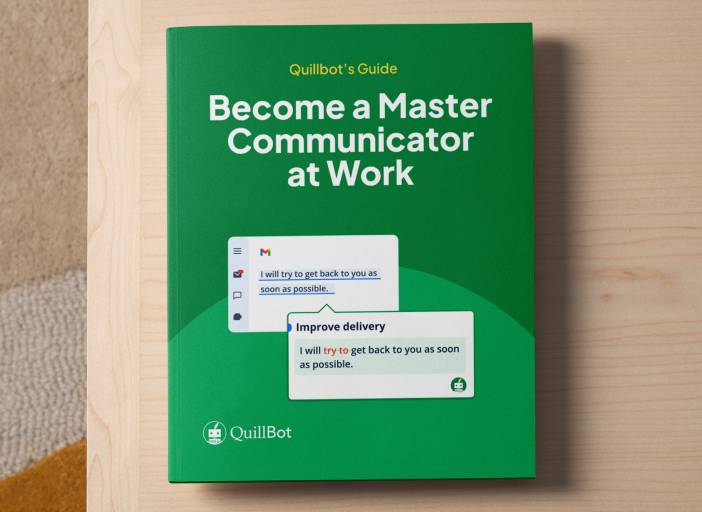What is Curated Content? | Explanation & Examples
Curated content is content created by others that a brand, organization, or individual selects and shares with their audience as a way to inform and engage them.
Maya then links the top five articles in her newsletter, writing a short summary and key takeaways for each.
In this way, Maya is using curated content—content from third parties that she has sourced, selected, and organized—instead of creating original content for her newsletter.
What is curated content?
Curated content is content that you do not create but that you find, evaluate, and share with your audience because it’s relevant, informative, or valuable to them. Instead of creating content from scratch, you highlight useful content that others created and present it in a way that adds context or perspective.
Nowadays, curated content usually refers to digital content, like blogs, newsletters, or social media. However, there are other common instances of curated content from other domains, like:
- Museum curators selecting works for an exhibition
- Radio DJs choosing songs for their time block
- A librarian picking books for a themed table
- A university professor selecting required reading for a course
How does curated content work?
Curated content allows you to supplement the content you create with content written and designed by others. It’s a multi-step process that includes:
- Definition: Before you begin curating content, define your goal. What do you want to achieve through content curation?
- Discovery: To curate content, you need to find content. Some methods for finding content include reading the news in your sector, subscribing to RSS feeds, using social listening tools, and setting up keyword alerts.
- Evaluation: Bear in mind that not all content is worth sharing. Assess the credibility of a source and evaluate the relevance and freshness of the content before sharing anything.
- Selection: Choose content that will interest your audience, spark conversation, or add value to your brand or organization.
- Add value: Sharing content without any context won’t engage your audience. Instead, provide summaries, key takeaways, commentary, or personal insights to help your audience understand why the content matters.
- Schedule: Ideally, curated content supplements your own content, so schedule it in a way that allows both to shine. For example, you might want to schedule curated content for days when you don’t plan to share content of your own. All this depends on the channel you’re using: blog, email newsletter, social media, etc.
Evergreen content (e.g., how-to guides or resource lists) is great for ongoing value and can be reused or reshared without becoming outdated. Time-sensitive content (e.g., news articles or trend reports) offers immediate relevance but loses value quickly.
When curating, try to balance both: include evergreen pieces for long-term usefulness and timely pieces to keep your audience engaged with what’s happening now.
Benefits of curated content
Curated content has many benefits, including:
- Saving time and resources: When you don’t have to create all your content from scratch, you save time and manpower.
- Keeping your channels active: Curated content means your posting frequency isn’t tied to how fast you can create content.
- Building relationships: Regular posting helps build a relationship with your audience. Moreover, when reposting content from sources you admire, tagging or crediting them can spark the chance for collaboration.
- Establishing authority: Sharing high-quality content in a timely manner shows that you have your finger on the pulse in your field.
- Improving trust and engagement: Curation positions you as a helpful, well-informed source that your audience can turn to when they need a question answered.
Best practices for curating content
Content curation isn’t particularly difficult, but you need to keep some best practices in mind to do it well:
- Keep the balance. Curated content should supplement your original content so that your audience hears from you, too.
- Curate with intention. Don’t share just to share. Choose content that aligns with your brand voice and values. If your curated content doesn’t match the tone and values of your own content, it will create a disconnect for the audience.
- Always credit the original creators. Include proper attributions or backlinks to the original source. This builds credibility among the audience and also fosters collaboration between brands and organizations. You can use QuillBot’s Youtube Video Description Generator to create descriptions that credit the original creators.
- Add your voice. Include your perspective, even if it’s just a quick comment or caption.
- Stay organized. Create a content calendar or use a scheduling tool to help you keep track of what needs to be published and when.
Curated content examples
Below are some examples of curated content as used in different channels.
| Channel | Example |
| Social media | A graphic design agency shares a carousel of the “Top 5 Logo Redesigns of the Year,” links to original articles or brand accounts, and adds brief insights. |
| A travel website for Thailand reposts Instagram stories from travel influencers posting about experiences in the country. | |
| Email newsletters | A tech startup sends out a weekly newsletter that links to five important articles on AI, software updates, and cybersecurity. Each article link includes a short summary about why it matters for small businesses. |
| A nonprofit’s newsletter highlights media coverage and academic studies related to their cause, along with a short commentary from the director. | |
| Blog posts | A parenting blogger curates a list of the best back-to-school checklists from across the web, outlining the pros and cons of each. |
| A career blog links to expert advice from trusted sources. Each is grouped under themes (body language, STAR method, salary talk) and introduced with a short explanation of why it matters. | |
| YouTube playlists | A fitness coach curates a playlist of the best beginner-friendly workouts from other YouTubers and adds a video intro explaining how to use the list as a 7-day plan. |
| Podcasts | A news podcast does a weekend wrap-up episode summarizing and commenting on stories published by major media outlets, citing each source. |
Frequently asked questions on what is curated content
- What is content curation in Ed-Tech?
-
Content curation in Ed-Tech is the process of selecting and sharing educational materials created by others to support teaching and learning.
Instead of creating all content from scratch, educators or Ed-Tech platforms gather relevant resources (e.g., videos, articles, lesson plans, or interactive tools) and present them in an organized way for students or teachers.
If you want to learn more about curated content in Ed-Tech or other domains, ask QuillBot’s AI Chat.
- What is a good content curation strategy?
-
A good content curation strategy is:
- Define your goal, and understand what you hope to get out of curated content.
- Know your audience and the content they want.
- Evaluate sources to make sure they’re trustworthy before sharing anything.
- Add context or perspective so your audience understands why the content is relevant.
- Give credit to the original sources.
- Maintain a balance of curated content with the content you create.
- Stay organized using a content calendar or scheduling tool.
Finally, use QuillBot’s Grammar Checker to make sure any original texts you write while curating content are free of errors.
Cite this Quillbot article
We encourage the use of reliable sources in all types of writing. You can copy and paste the citation or click the "Cite this article" button to automatically add it to our free Citation Generator.
Santoro, K. (2025, July 15). What is Curated Content? | Explanation & Examples. Quillbot. Retrieved August 11, 2025, from http://qbot.seotoolbuy.com/blog/content-writing/what-is-curated-content/

